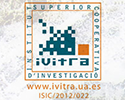Deciphering Lo somni and its literary techniques
Julia BUTIÑÁ
Original title: Descifrando Lo somni y sus técnicas literarias
Published in Mirabilia Journal 34
Keywords: Italian Trecento authors, Lo somni, Ramon Llull, Rhetoric, Troubadour Poetry.
The message that, in Lo somni, the spirit of the king secretly entrusts to the author –the great humanist Bernat Metge– commissioning him to spread it in the future, given its dangerous nature, is encrypted through literary sources. After following –especially those of Boccaccio– in the four books, by means of tables published in 2002, his links between the different books are represented in a diagram. This allows verifying that said layout is not only harmonic and makes the logic of said sources explicit, but also seems to reveal techniques typical of verse –coming from the troubadour heritage– and of prose –the framework used by the Italian Trecento authors–, which would contribute to artistically encrypt the message. This consists of rejecting the misogynistic doctrine of the Petrarchian Secretum, which has contaminated Boccaccio, and adhering to Llull, who has the most intricate artifice of concealment. The investigation is completed by a contrast with the Apologia, which confirms these results.
Figures of Speech in Garcia de Resende’s (1470-1536) Cancioneiro Geral
Geraldo Augusto FERNANDES
Original title: As figuras de linguagem no Cancioneiro Geral de Garcia de Resende (1470-1536)
Published in Returning to Eden
Keywords: Figurae, Garcia de Resende’s Cancioneiro Geral, Humanism, Poems of mixed forms, Rhetoric.
The studies of Rhetoric and the use of its resources began to emerge during Humanism in Portugal. These were made or found in the libraries of monarchs and princes, as well as in monasteries. But Rhetoric also becomes a discipline that will be key for the nation to commune with humanistic precepts which is spreading throughout Europe with the aim of forming the human person, physically, intellectually, and morally. This advent, which took place from the fifteenth century onwards, also focuses on the literature developed in the palace evenings. In this study, the use of rhetorical devices shows how it interferes in poetics, especially the one developed in Garcia de Resende’s Cancioneiro Geral, from which I extracted the many examples of these embellishing means (of oratory and poetics, as Quintiliano says), all of which are apparent in the poems of mixed forms. What I propose is to present the examples taken from the Resende’s songbook, listing the resources, and showing them in the poems of the compilation. Quintilian and the anonymous of the Rhetorica ad Herennium will be collated with the studies of Juan Casas Rigall, Heinrich Lausberg, Baltasar Gracián, Nair Nazaré Castro Soares, Maria Isabel Moran Cabanas, Antonio de Nebrija, among others.
Fray Antonio de Guevara (c. 1480-1545) and the maritime voyages in the Mediterranean through his Arte de marear
Jesús Fernando CÁSEDA TERESA
Original title: Fray Antonio de Guevara (c. 1480-1545) y los viajes marítimos en el Mediterráneo a través de su Arte de marear
Published in Intercultural Mediterranean
Keywords: Antonio de Guevara, Arte de marear, Chronicle, Rhetoric, Sixteenth Century.
Language:
Throughout this study, and after situating the text and the reasons for it writing historically, I call it antichronicle, a true contrafactum to the chronicles of the Indies and the diving arts of its time. I link it to the warnings and to the relationships of events and I analyze its rhetorical structure, the influence of the thematic sermon and of the ars praedicandi. I refer to the important relationship with the printer Juan de Villaquirán. And finally, I study two fundamental themes in the work: humour and self-satire on the one hand, and his observational point of view on contemporary uses and customs on the other.
Images of the body in the rhetorical ethos of Cicero (106-43 a. C.) and Descartes (1596-1650)
Giannina BURLANDO
Original title: Imágenes del cuerpo en el ethos retórico de Cicerón (106-43 a. C.) y Descartes (1596-1650)
Published in The Medieval Aesthetics
Keywords: Body images, Cicero, Descartes, Rhetoric.
The main hypothesis of the study tries to establish that there are images of bodies, which play the role of figuring a certain rhetorical ethos in both Cicero and Descartes. Both are critical authors of the rhetoric inherited from their predecessors, who in turn build their new rhetorical ethos. The first section shows a rhetorical ethos permeated by images of neo-academicist bodies of the mythical-epic type that mirror the vital culture of Cicero. The second to the fifth section includes the perspective and images of neo-Renaissance mathematical-geometric bodies in the work of Descartes, in both cases, the images of bodies have sign value of their times.
Literature as an Instrument of Legal Defense
María DE HOCES LOMBA
Original title: La Literatura como instrumento de defensa jurídica
Published in
Keywords: Apology, Audience, Classicism, Defense, Humanism, Law, Legal, Literature, Oratory, Persuasion, Petition, Rhetoric.
Based on prestigious literary works and the academic training and personal experiences of its authors, it is possible to establish a real and useful relationship between Law and Literature, so the former is capable of influencing Literature beyond mere fiction. These works, which we would call literary defenses would be able to achieve full effects in the real world, directly affecting the lives of their creators, thus fulfilling the intention with which they were written. They could be considered a subgenre on their own, because this insertion of Law in Literature originates a literary work in depth and form, being capable, at the same time, of displaying effects like a legal document.






















































































